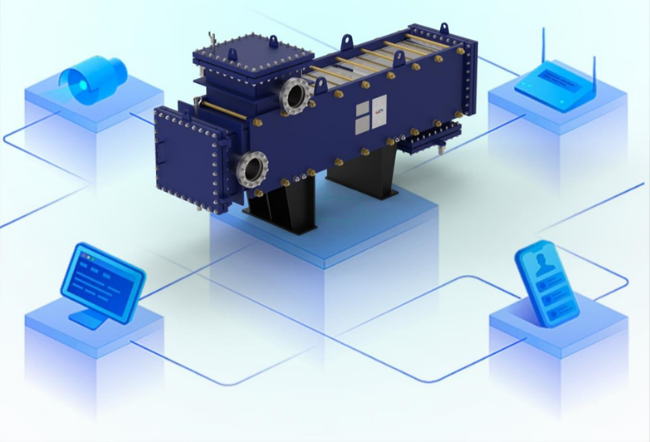Heat exchangers are important components in a variety of industrial applications, providing efficient heat transfer between two fluids. Among them, the welded plate heat exchanger stands out for its compact design and high thermal efficiency. However, like any mechanical system, it can experience problems, including clogs. Knowing how to identify a clogged welded plate heat exchanger is critical to maintaining optimal performance and preventing costly downtime.

Signs of clogging in welded plate heat exchangers
1. Reduced heat transfer efficiency: One of the first indicators of plate heat exchanger blockage is a significant decrease in heat transfer efficiency. If you notice that the outlet temperature of your heating or cooling fluid is not what you expect, it could be a sign that the flow path within the plate is blocked.
2. Increased Pressure Drop: A clogged heat exchanger will usually cause an increase in pressure drop across the unit. If you notice a higher-than-normal pressure reading on your pressure gauge, it may indicate that flow is restricted due to debris or dirt within the plate.
3. Unusual Noises: If your Welded Plate Heat Exchanger begins to make unusual noises, such as gurgling or knocking sounds, this may be a sign of cavitation or fluid turbulence due to restricted flow. This may be a direct result of a blockage and should be investigated immediately.
4. Frequent Maintenance Intervals: If you find yourself performing maintenance on your heat exchanger more frequently than usual, this could be a sign of an underlying problem, including a clog. Regular maintenance is critical, but increased frequency may be a sign that the system is not operating efficiently.
5. Visual Inspection: If possible, perform a visual inspection of the heat exchanger. Although welded plate heat exchangers are not designed to be easily disassembled, any visible signs of corrosion, scaling or deposits on the outside may indicate a problem internally. If you have access to the plates, check for any visible clogs or buildup.
Precautions
To avoid clogging of your welded plate heat exchanger, consider taking the following precautions:
Periodic Cleaning: Schedule periodic cleaning of the heat exchanger based on the application and fluids being handled. This can help remove any buildup before it becomes a serious problem.
Fluid Filtration: Installing a filter upstream of the heat exchanger can help capture debris and particles that can cause clogs. This is especially important in systems where the fluid may contain particles.
Monitor Operating Conditions: Pay close attention to operating conditions, including flow rate and temperature. Sudden changes may indicate an underlying problem that could cause a clog.
Use Proper Fluid: Make sure the fluid used in the heat exchanger is compatible and free of contaminants. Using the correct fluid can significantly reduce the risk of scaling.
In conclusion
Early identification of clogged welded plate heat exchangers can save time, money and resources. By knowing the signs of blockage and taking preventive measures, you can ensure that your heat exchanger is operating efficiently and effectively. Regular monitoring and maintenance are key to extending the life of your equipment and maintaining optimal performance. If you suspect a clogged heat exchanger, it is recommended to consult a professional to assess the situation and take appropriate action.
Post time: Oct-15-2024

